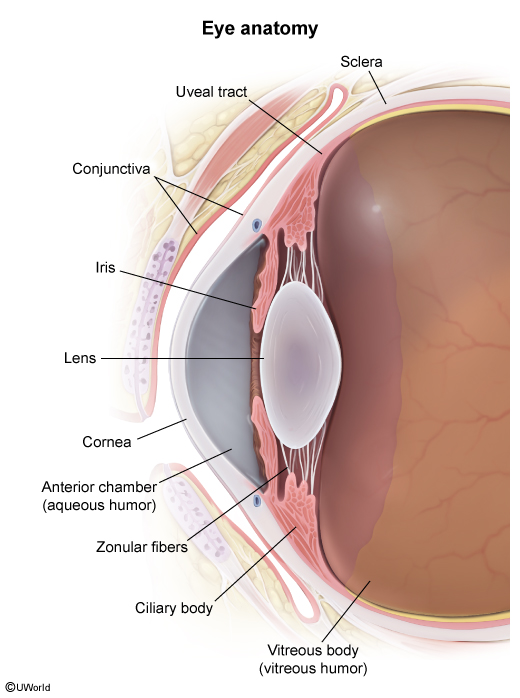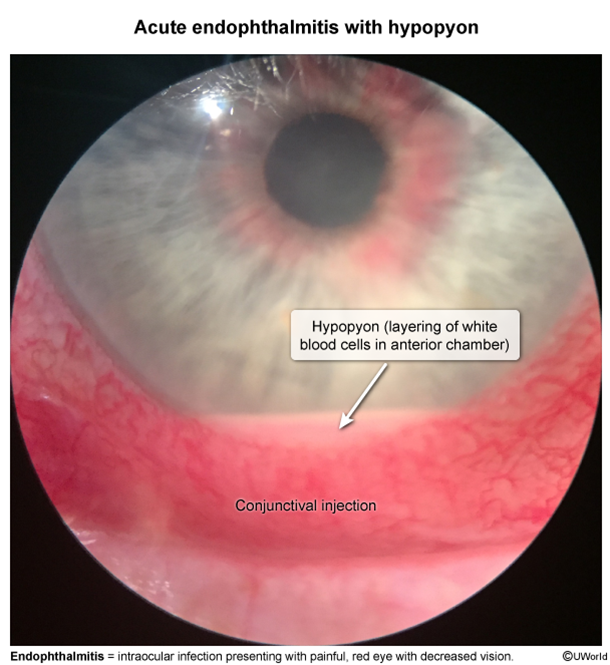Endophthalmitis
Article Sections
Introduction
Endophthalmitis is a severe intraocular infection involving the aqueous and vitreous humors (Figure 1). Most cases are caused by bacteria, but fungal infections can occur. Common presenting symptoms include decreased visual acuity and aching discomfort in the affected eye. Conjunctival injection, hypopyon (layering of white blood cells in the anterior chamber), and vitreous opacification are characteristic examination findings. Patients require emergent ophthalmology consultation for administration of intravitreal antimicrobials to prevent permanent vision loss.
Pathophysiology and risk factors
Endophthalmitis is categorized as either exogenous or endogenous infection based on how microorganisms gain access to the intraocular space.
- Exogenous endophthalmitis occurs when a traumatic disruption of the globe's integrity allows entry of microbes (usually bacteria). Risk factors include:
- Ocular surgery (especially cataract surgery)
- Eye trauma
Continue Learning with UWorld
Get the full Endophthalmitis article plus rich visuals, real-world cases, and in-depth insights from medical experts, all available through the UWorld Medical Library.
Figures

Images
